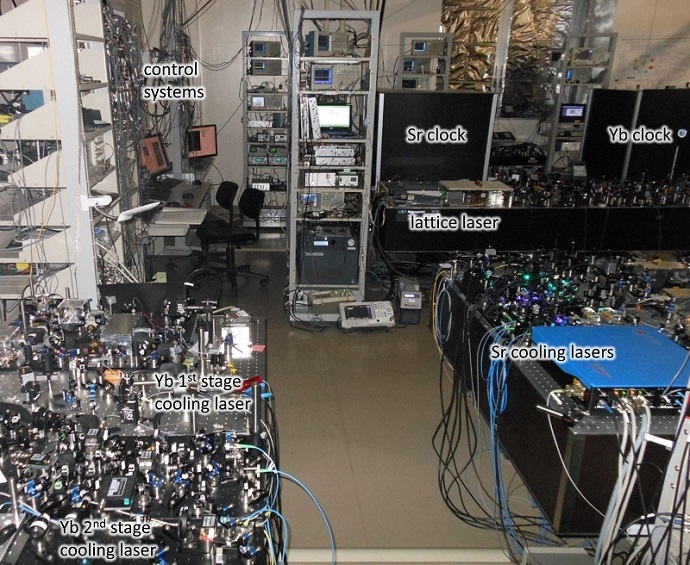2016/04/06
Optical clocks presently allow the most accurate frequency measurements of any such device, and are in development as the next generation of atomic clocks in laboratories all over the world. The accuracy of such clocks has reached a point where comparing clocks becomes a challenge in itself.
The research group, led by Graduate School of Engineering Professor Hidetoshi Katori (Chief Scientist, RIKEN), reports the results of comparing the frequencies of two optical lattice clocks using ytterbium and strontium atoms. The research group determined the frequency ratio with an uncertainty of less than 5 parts in 1017, surpassing the limit set by the implementation of the “Système international d'unités”(SI) second itself, and improving on the record uncertainty for a comparison between clocks based on different atoms. In addition, improved stability reduced the measurement time required to reach this uncertainty level to less than 150 seconds, a reduction by a factor of 90 over previous comparisons of mercury and aluminum single-ion clocks.
“With such ultra-precise comparisons of different atomic systems, in addition to functioning as highly precise clocks, these devices will act as highly sensitive detectors that may open new windows of science onto the physical world,” says Professor Katori. He continues, “Such measurements will allow investigation of the constancy of fundamental physical constants and new physics beyond the Standard Model.”
Press release (Japanese)
Paper
Nils Nemitz, Takuya Ohkubo, Masao Takamoto, Ichiro Ushijima, Masao Takamoto, Manoj Das, Noriaki Ohmae, and Hidetoshi Katori, "Frequency Ratio of Yb and Sr clocks with 5x10-17 uncertainty at 150 seconds averaging time", Nature Photonics 10, 258 (2016), doi: 10.1038/nphoton.2016.20.
Article link (Publication)















